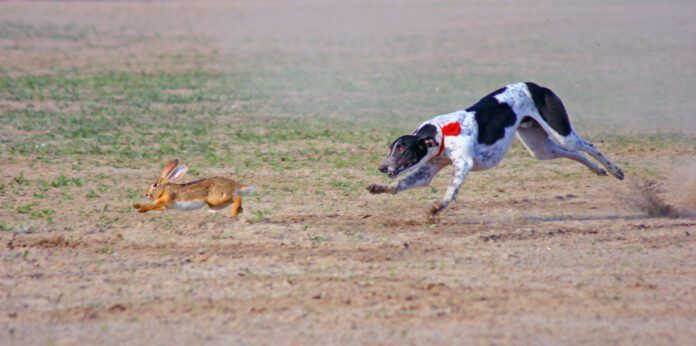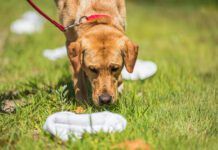I watch my Belgian Tervuren bitches do “natural and raw” food. While my boys prefer cooked and served on a platter, the girls will catch a rabbit, and they eat all of it. Hair, head, guts, along with muscle meat. Is this a natural raw diet? Not really.
Most raw diets concentrate on muscle meat and bones. At-home versions are heavy on neck bones, wings, and backs. And, importantly, supplements are needed to round out the diet and approach nutritional completeness.
Vital vitamins and minerals must be compensated for in a raw diet. Getting the calcium/phosphorus balance just right, especially for puppies, can be very challenging. Properly feeding raw you make yourself is not as easy as your dog catching and consuming an occasional rabbit.
Proponents of raw diets believe that raw is more natural and more nutritious. The catch is that commercial and even homemade raw diets aren’t mimicking a true natural diet for canids, which includes a variety of prey (dead and alive), as well as plants, berries, and vegetables.
Are Raw Diets Healthy for Dogs?
To be healthy, a raw diet must be balanced and complete, and there are commercial raw diets that do just that. Vegetables, fruits, and supplements may be included. Most manufacturers rely on freezing, freeze-drying, or dehydration to preserve the foods for shipping and storage.
Can a Raw Diet Safely Provide Good Nutrition?
Yes, it is possible, but it requires more expense and effort than the average dog owner can or will put in to do it correctly. If you choose to feed raw, do your research and make the effort to do it right. For some dogs, it does seem to help (anecdotally, as there are no clinical studies), probably from minimal ingredients as much as anything.
Is a Raw Diet Dangerous for Dogs?
The Centers for Disease Control and Prevention (CDC) recommends avoiding raw diets for pets, for both human and pet potential health problems. Many veterinarians agree.
Raw pet foods are in the news a lot due to cats dying from raw diets and raw milk infected with avian flu. Freezing and freeze-drying do not kill the avian flu virus. At this time, dogs appear to be resistant to the avian flu virus, but that could change with mutations.
In addition, an FDA study from 2014 found the risk of exposure to some foodborne bacteria (Salmonella, Listeria, or toxigenic E. coli) in frozen raw meat diets for pets purchased online is about one out of three. Remember, freezing and freeze-drying do not affect most viruses, although many bacteria and parasites will be wiped out. Any toxins present may be preserved.
While dogs in general are fairly resistant to these pathogens, many are not. Puppies with immature immune systems and seniors with weakened immune systems are at risk, along with any dog with an immunocompromising health problem, such as cancer. Also, people are more susceptible to those bacteria than dogs.
That means food hygiene while preparing these foods must be perfect. A household with human seniors, very young children, and anyone with an immune-related illness should avoid touching raw pet foods.
Then, why don’t my dogs who catch and eat rabbits get sick? These girls are eating truly fresh meat with no chance for bacterial growth or toxin production sitting on your kitchen counter thawing. (Of course, my dog could still get things like tapeworms from those “fresh” meals.)
When it comes to “natural food,” dogs have evolved to eating a wider variety of foods than their wild ancestors with domestication, such as utilizing starches better than wild canids. If you choose to feed raw, simply ensure you take all safety precautions and ensure that the food you purchase or make yourself is nutritionally complete.






I would like to know if Dr. Eldredge is an Integrative Vet? Are the additives that are used in dog food that she suggested coming from China?
This is one of the most uninformative articles on feeding raw I’ve ever read. Quoting a 2014 FDA report on the dangers of frozen raw diets is outdated and appears to be a scare tactic. Stating that young children and seniors should touch raw food is common sense. Do you ask your 3 year old to touch the chicken breast you are preparing for their dinner? I fed raw while going through both radiation and chemo and used latex gloves. I’ve been feeding homemade raw for over 26 years and it’s articles like this that prevent more people from making the switch. Feeding raw is a ‘lifestyle’ and owners should educate themselves before making the switch, but I would hope that Whole Dog Journal would publish articles with more ‘meat’ in the content.
TOTALLY agree with you!! 100% This was not a good article at all. Totally outdated. The hype against raw food is from the kibble companies that are losing money.
Also agreed. This is not a thoughtful article about dog nutrition and health. What we need is a more educated understanding of what nutrition is and how to achieve it. And if the answer is that we haven’t really done the research to know-know what dog nutrition and health is, then we need to know that too. Please site references when delivering your ‘facts’. I think you are underestimating your audience. I’ve turned to raw because my dog cannot tolerate legumes or wheat and some other things that we have not yet been able to isolate. But he can eat all the SFRAW grinds as well as many veggies. So we make food for him cycling through proteins, base formulas, veggies, supplements, and probiotics. This article is insulting to the extent that it is an oversimplification of the issues involved in choosing a diet for your dog.
I like that I am trying to educate myself on feeding my dog raw with some dry food one small scoop of dry food a day and then in the evening I give him a raw piece of Bison from the meat because I feel like that is the only true organic meat allegedly they are not supposed to give hormones to the Bison I don’t know how true that is do you have any tips for me or anywhere you can direct me that would help me make better choices for my dog? Thank you appreciate the help 🙏🏼amanda-coppola@live.com
Yes, this is a misleading article, e.g.:
“Many veterinarians agree.” Unless they pursue their own, extracurricular courses on nutrition, veterinarians get extremely little instruction on nutrition and know little about it: about 10 years ago, the U or Penn vet school gave only 1, forty-five minute, mandatory class on nutrition.
“The CDC recommends avoiding raw diets.” Well of course it does: they mostly hear only from the wealthy kibble lobbyists who go out of their way to disparage raw diets.
One must do quite a bit of research before embarking on a raw diet, but sadly I think most pet owners aren’t willing to spend the time, just want a quick fix so they can scoop from one bag into their pet’s bowl.